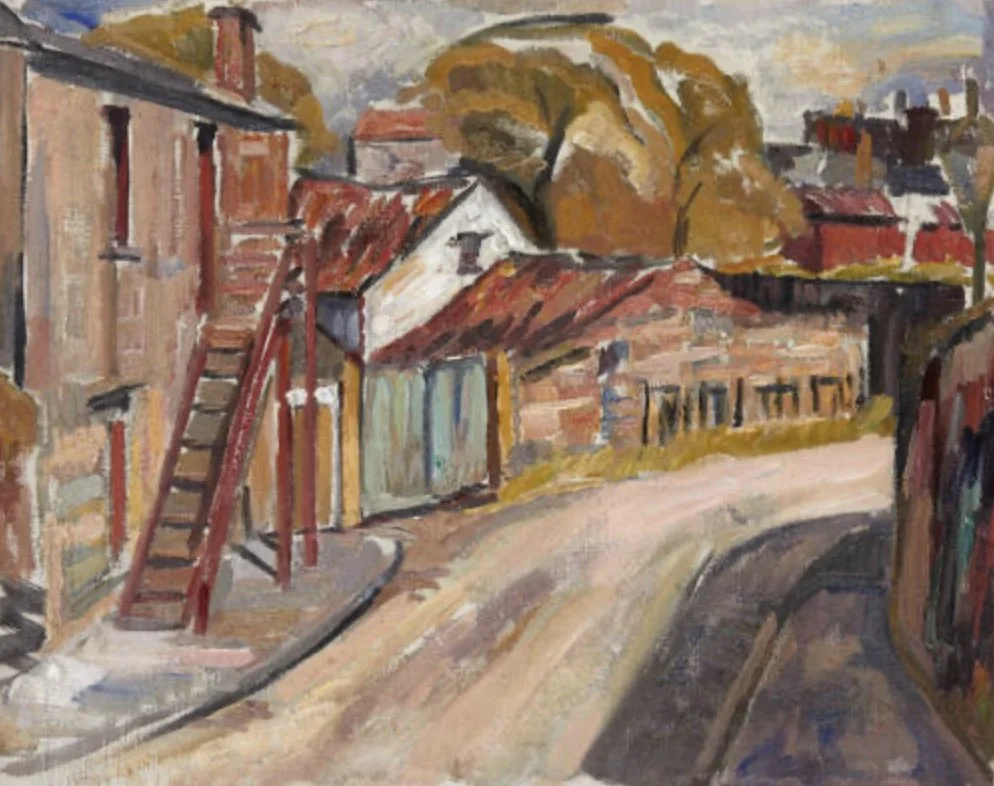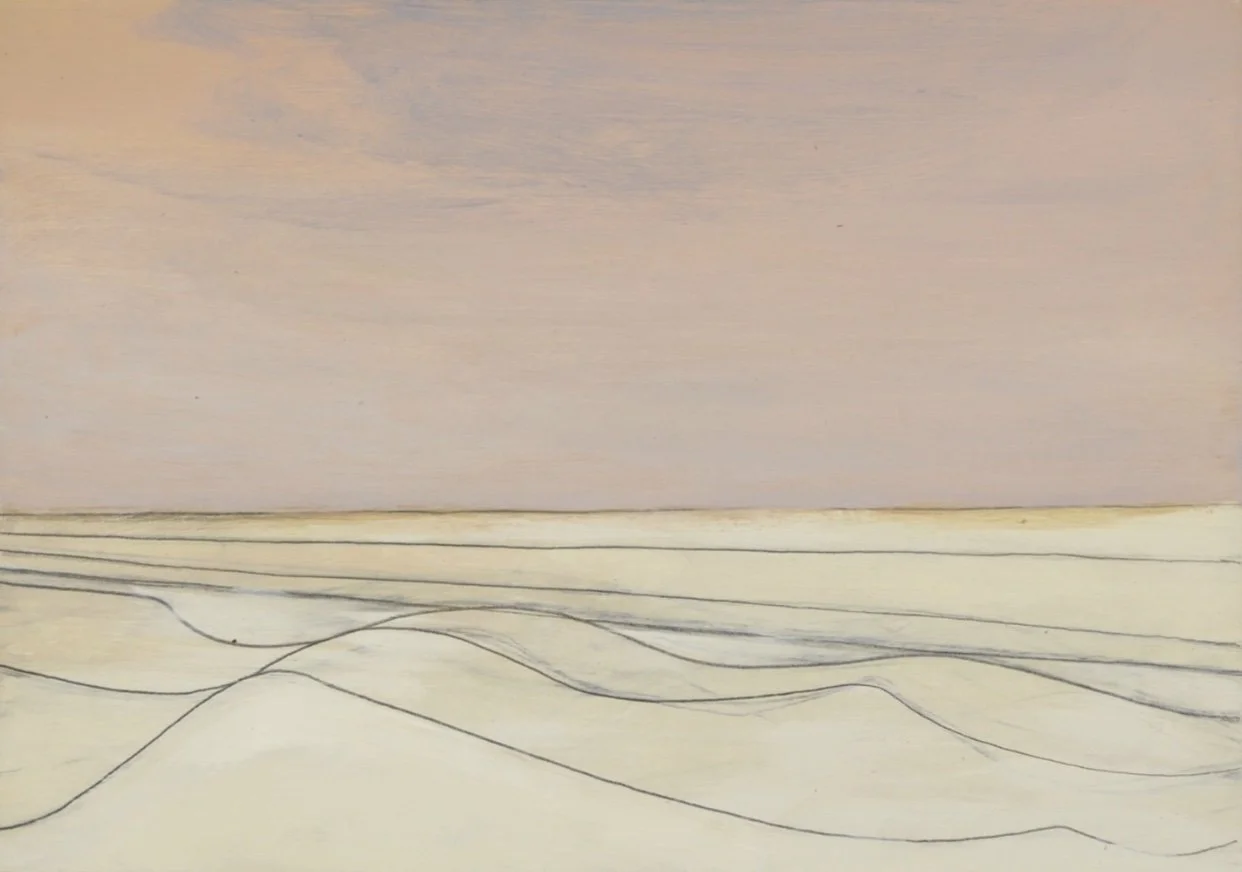Sunset on West Sands: Wilhelmina Barns Graham
By Brynn Gordon
“St Andrews” is a recognizable name for many reasons. It is the home of golf, a set for popular movies and TV shows, and Scotland’s oldest university. It is interesting, then, that for a university known for its art history course, there have been comparably few artists produced by the town. That is, excluding Wilhelmina Barns Graham.
Born in St Andrews on June 8th, 1912, Wilhelmina Barns Graham, known as "Willie," was a significant figure in British post-war art, being tied closely to the St. Ives school for most of her career. Barns Graham’s family was linked to landed gentry in Fife and Stirlingshire, resulting in a rather “old fashioned” childhood. Barns-Graham’s parents were discouraging of her early creative promise; her father even opposed her enrolment in the Edinburgh Collage of Art in 1931.
The Road, 1937, Oil on Canvas, 40.6 × 50.8 cm, Barns Graham Trust.
This spartan and rigid atmosphere at home may have driven Barns Graham to look to St Andrews and its surroundings for inspiration; fields, beaches, and the natural world would be career-long inspirations to her, whether she was working in Scotland or Cornwall.
White Cottage Cornwall, 1944, Gouache on Paper, 39 x 49 cm, Barns Graham Trust.
After her graduation from Edinburgh Art College in 1937, Principal Hubert Wellington suggested to Barns Graham that she go to St. Ives, Cornwall, where many cutting-edge modernists gathered during the Second World War. It was here that Barns Graham moved beyond the studies and straight-forward depictions to a more abstracted, atmospheric approach to painting. In paintings like White Cottage Cornwall (1944), she focuses on the earthy colour palette and the interaction of shapes making up the scene over realism. She captures the atmosphere of quietly staring out over the horizon on a still day, all elements in the painting drawing the viewer’s eye towardsIn Cornwall Barns Graham artistically matured alongside Peter Lanyon, Terry Frost, Bryan Wynter and Roger Hilton, working towards an increasingly abstract and geometric aesthetic usually relating to natural or scientific subjects. In 1963, her divorce from St Ives School poet David Lewis, and the competition between artists made St Ives unappealing. It was at this time she returned to St. Andrews where she first learned to draw.
In Cornwall, Barns Graham artistically matured alongside Peter Lanyon, Terry Frost, Bryan Wynter, and Roger Hilton, working towards an increasingly abstract and geometric aesthetic usually relating to natural or scientific subjects. In 1963, her divorce from St. Ives School poet David Lewis and the competition between artists made St. Ives unappealing. It was at this time that she returned to St. Andrews, where she first learned to draw.
During this time, Barns Graham’s conceptual focus remained constant while she experimented with increasingly abstract and geometric forms. She utilised repetition, different mediums, mathematical concepts, etc. all to better depict natural forces with the most economic means of expression. She said of her process, “For a session of drawing, I may exclusively use linear ideas: an abstraction of what has been observed... building up a rhythm to allow the unexpected as curves or wave lines encourage imagination and creativity. These rhythms suggest flowing forms, water, grass, and wind movements, or lines for the pleasure of themselves.” If is from these ideas that she produced 1981’s West Sands (St Andrews), July.
West Sands (St Andrews), July, 1981, acrylic & pencil on card, 27 x 38 cm, Barns Graham Trust.
The mellow beauty of a St. Andrews sunset is captured in the subtle purple and grey clouds that betray Barns Graham’s formal training. Where exactly the viewer is situated is ambiguous, potentially being behind the dunes looking at light playing on the sea or being far past breaking waves looking back towards land. Either way, the flowing lines, melting colours, and ambiguous viewpoints expressed within this piece capture something of the spirit of the linear, windswept West Sands. It is a sensitive tribute to her home town and constant inspiration, one of the finer achievements that can be attributed to St. Andrews.
In 2004, Barns Graham set up the Barns Graham Charitable Trust to help young artists, providing scholarships and bursaries, assisting art historians, and creating residencies for poets and artists. For more information about Barns Graham’s work, please visit the trust’s website.
Bibliography:
Hall, Douglas. “The Artist’s Life - Wilhelmina Barns-Graham Trust.” 5 Dec. 2022, www.barns-grahamtrust.org.uk/wilhelmina-barns-graham/the-artist/.
“Wilhelmina Barns-Graham: Artist’s Life Celebrated.” Special Collections Blog, 7 Dec. 2012. special-collections.wp.st-andrews.ac.uk/2012/12/07/wilhelmina-barns-graham-artists-life-celebrated/.
“Wilhelmina Barns-Graham - Insights 8.” Fife Contemporary, 23 July 2020. www.fcac.co.uk/exhibits/insights-8/.



